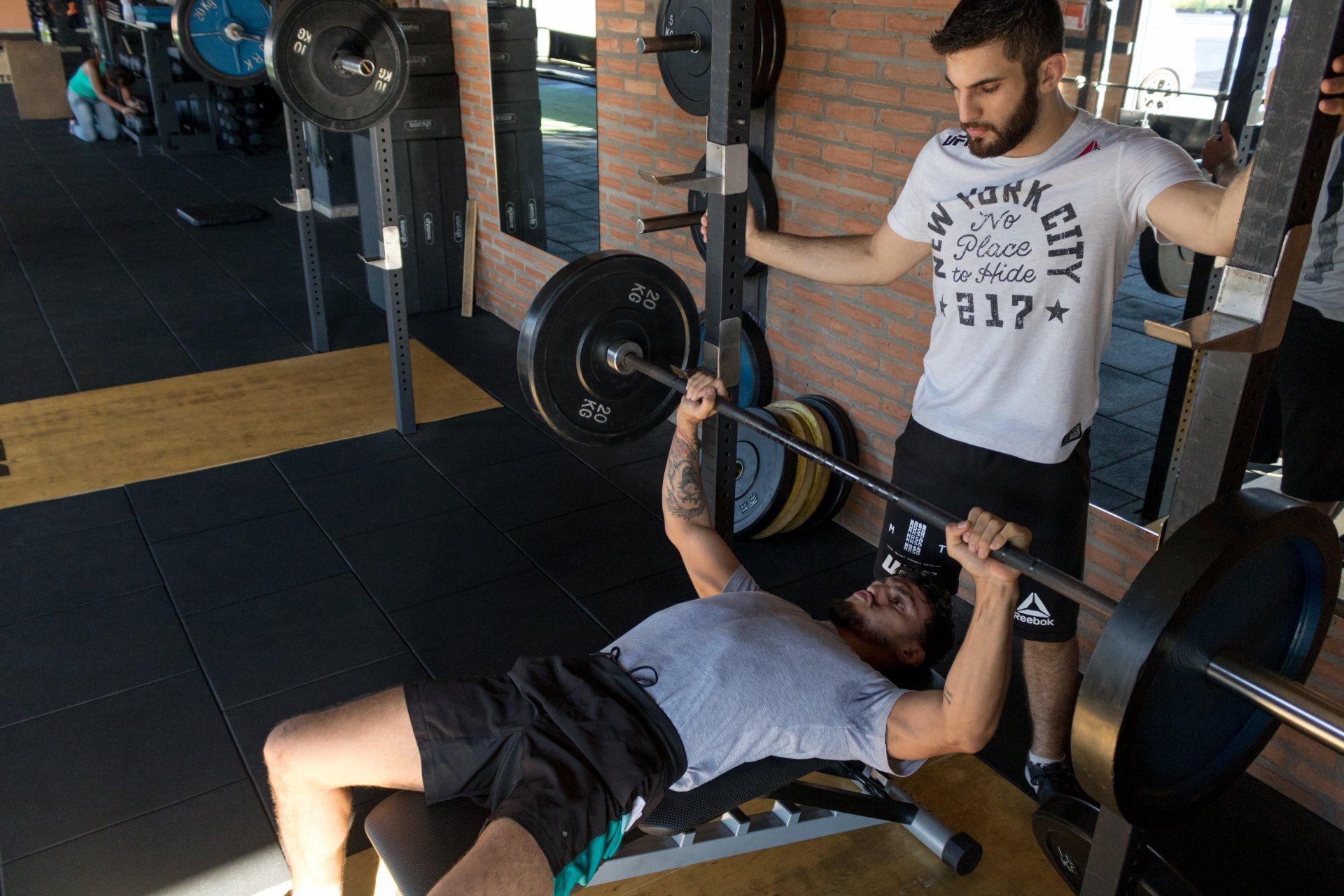Functional Fitness Classes in Reno, NV
Reno Power House Fitness
Scalable group fitness classes, personal training, nutrition and more for people of any fitness level.
Discover Life-Changing Fitness Classes at the Best Gym in Reno, NV
At Reno Power House Fitness you'll find more than just a gym. Experience the best workout classes in Reno based on the functional fitness methodology, plus expert personal training, nutrition coaching, and more. We offer everything you need to begin achieving the genuine health and fitness results you've been searching for. Experience it firsthand by joining us in the gym for a complimentary class today!
Fitness For All
Join today to experience life-changing growth, no matter your current fitness level.
Performance Tracking
Track progress, log workouts and connect with coaches in our member app.
Expert Coaches
Achieve your fitness goals with the support of our amazing team of coaches.
Real Community
Join a supportive, motivational community of athletes.
Program Categories
We offer a wide variety of fitness classes each week to suit whatever your skill level and goals may be.
Featured Programs

RPHFIT
Group functional fitness classes featuring varied and scalable full-body workouts.

Kids & Teens
Fitness classes specifically geared towards kids and young athletes.

Open Gym
Access to our entire gym facility and all equipment to workout however you want.
Membership Plans
Schedule
We're open 7 days a week and offer group classes almost every day. Check out our recurring class schedule below and join us in the gym today!
| Monday |
|---|
| Open Gym - 24/7 12am - 11:59pm |
| RPHFIT 5:15am - 6:15am |
| RPHFIT 6:15am - 7:15am |
| RPHFIT 7:15am - 8:15am |
| RPHF60 9am - 10am |
| RPHFCOMP (Invite Only) 10am - 12pm |
| RPHFIT 12pm - 1pm |
| RPHFIT 4:45pm - 5:45pm |
| RPHFIT 5:45pm - 6:45pm |
| Tuesday |
|---|
| Open Gym - 24/7 12am - 11:59pm |
| RPHFIT 5:15am - 6:15am |
| RPHFIT 6:15am - 7:15am |
| RPHFIT 7:15am - 8:15am |
| RPHFCOMP (Invite Only) 10am - 12pm |
| RPHFIT 12pm - 1pm |
| Kids 4pm - 5pm |
| RPHFIT 4:45pm - 5:45pm |
| RPHFIT 5:45pm - 6:45pm |
| Suns Out Buns Out 6:45pm - 7:45pm |
| Suns Out Guns Out 6:45pm - 7:45pm |
| Wednesday |
|---|
| Open Gym - 24/7 12am - 11:59pm |
| RPHFIT 5:15am - 6:15am |
| RPHFIT 6:15am - 7:15am |
| RPHFIT 7:15am - 8:15am |
| RPHF60 9am - 10am |
| RPHFCOMP (Invite Only) 10am - 12pm |
| RPHFIT 12pm - 1pm |
| RPHFIT 4:45pm - 5:45pm |
| RPHFIT 5:45pm - 6:45pm |
| Thursday |
|---|
| Open Gym - 24/7 12am - 11:59pm |
| RPHFIT 5:15am - 6:15am |
| RPHFIT 6:15am - 7:15am |
| RPHFIT 7:15am - 8:15am |
| RPHFIT 12pm - 1pm |
| Kids 4pm - 5pm |
| RPHFIT 4:45pm - 5:45pm |
| RPHFIT 5:45pm - 6:45pm |
| Gymnastics 6:45pm - 7:45pm |
| Suns Out Buns Out 6:45pm - 7:45pm |
| Suns Out Guns Out 6:45pm - 7:45pm |
| Friday |
|---|
| Open Gym - 24/7 12am - 11:59pm |
| RPHFIT 5:15am - 6:15am |
| RPHFIT 6:15am - 7:15am |
| RPHFIT 7:15am - 8:15am |
| RPHF60 9am - 10am |
| RPHFCOMP (Invite Only) 10am - 12pm |
| RPHFIT 12pm - 1pm |
| RPHFIT 4:45pm - 5:45pm |
| RPHFIT 5:45pm - 6:45pm |
| Saturday |
|---|
| Open Gym - 24/7 12am - 11:59pm |
| RPHFIT 8am - 9am |
| RPHFIT 9am - 10am |
| RPHFCOMP (Invite Only) 10am - 12pm |
| Gymnastics 6:45pm - 7:45pm |
| Sunday |
|---|
| Open Gym - 24/7 12am - 11:59pm |
Location
559 E 4th St, Reno, NV 89512, United States of America
Contact Us
Have questions? Send us an email and a member of our team will get back to you.
Testimonials
Check out what our members are saying about being a part of our gym community.
Can’t say enough wonderful things about this gym!! Sal (the owner) and his coaches are truly amazing. The are extremely knowledgeable, motivating, and caring. They will go out of the way to ask you how you are feeling, high five you after a great workout, and they make coming to the gym fun!! They are always on time and ready to help! The gym is extremely clean and the community is awesome!! So glad we joined RPH!"
- Melissa H.
I am extremely happy to have found Reno Power House Fitness! This gym has everything an athlete is looking for. Great facilities that are always clean and well maintained. A staff of experienced and welcoming coaches. And a sense of community throughout. Great workouts and programming! The occasional beer afterwards at the brewery across the lot. It's an incredibly fun and welcoming gym."
- Andrew W.
What can I say about this gym? I have made more gains and improvements due to the coaching and guidance of this gym and coaches in the last 7 months than I have in the last 10 years. This is an amazing gym with an amazing community. The coaches take an interest in the individual and celebrate achievements big and small, and I can’t thank them enough."
- Ryan H.
Get Started Today
Ready to experience the best fitness classes in Reno, NV? Join us for a free functional fitness workout today and see how our community of expert coaches and supportive members can help you find life-changing growth in your fitness and wellness.










